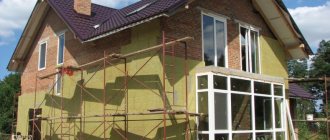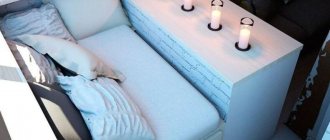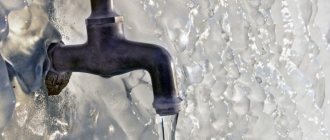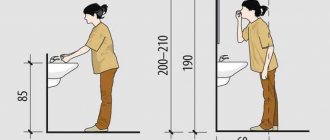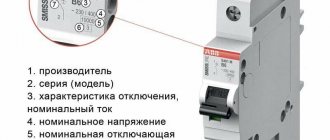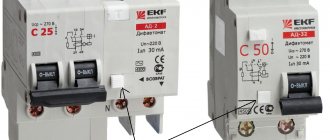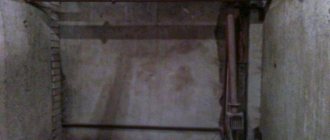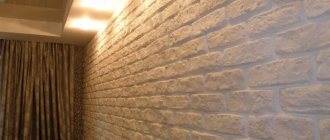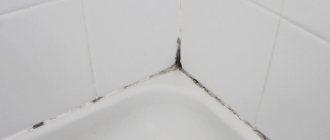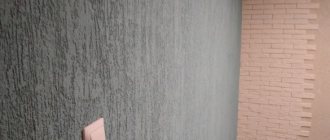Ventilation refers to communications, the installation of which is planned at the stage of creating a private house construction project. This is justified by basic sanitary and hygienic requirements. Without proper air exchange, comfortable living is simply impossible.
We will tell you how to insulate a ventilation pipe to ensure its normal operation in winter. From the article we present you will learn which thermal insulation materials meet modern requirements. You will understand how to choose the best option for insulation.
Interested DIYers will find brief instructions on how to install a thermal insulation barrier. Those who decide to insulate the hood themselves will receive information proven in practice. Compliance with our recommendations is a guarantee of a successful result.
Why insulate the ventilation system
Ventilation is designed to remove contaminated air from the room; it provides appropriate sanitary and hygienic conditions for people. A person releases a lot of moisture during breathing; Bathing, washing, drying, ironing, cooking, washing dishes are also associated with water evaporation.
From residential buildings and offices, the air carries away excess moisture, carbon dioxide - a product of respiration, odors, dust, and sometimes smoke that gets into the air due to improper operation or lighting of the stove or fireplace. A hood over a gas stove removes combustion products and food odors.
Regardless of whether there is natural or artificial ventilation in the room, when it leaves the heated volume, the outer pipe cools and moisture from the air settles on the cold walls.
When it comes to stove hood, combustion products containing sulfur oxides, some chlorine, and nitrogen oxides are mixed with the water. When combined with water they form aggressive acids. Few acids are formed, ventilation is not the chimney of a solid fuel unit, but they can damage the ventilation duct or surrounding structures if they leak out through the joints.
Condensation usually flows out into the air intake hole and drips down - onto the floor, walls, onto the stove, and into food.
Thermal insulation of air ducts increases the speed of air movement upward and the quality of ventilation.
Fan sewer pipes are another type of air ducts that go outside. They remove odors from the sewer system and equalize the pressure in the system when draining a large volume of water. If cast iron or steel pipes are used for their installation, the heat-conducting metal is cooled, lowering the temperature of part of the air duct in the room.
In this case, condensation settles on the outer surface at the top of the room. The result is dirty streaks, wetting of the floor structures, wetting of the insulation in the floor, damage to the decorative lining of the air ducts.
It is also necessary to insulate the air supply ducts to heating units and the supply ventilation ducts - condensate settles on them from above.
Industrial ventilation to a greater extent removes toxic impurities and dust generated during production processes. To effectively remove contaminated air, not only general supply and exhaust ventilation is often used, but also local suction. Sometimes excess heat is removed along with the air. Since industrial systems have greater power and dimensions, thermal insulation of boxes is even more important for them than for domestic systems.
The main goal of thermal insulation of a ventilation system is to ensure that the dew point falls into the insulation and not onto the wall of the air duct, and condensation does not settle on the walls (no matter inside or outside).
In what places should pipes be insulated?
Thermal insulation is necessary for the surface of the air duct outside the heated volume - in the cold attic and on the roof. There is no need to insulate air ducts when passing through an attic or a heated second floor. Supply ventilation ducts, fan ducts, air supply pipes to heating devices are insulated inside heated rooms and buffer zones - basements, storerooms, auxiliary rooms, boiler rooms.
Do I need to insulate ventilation pipes in the attic?
In the attic, it is necessary to insulate the air ducts first. Warmer air moves through the ducts, creating a greater temperature difference between the air in the duct and the air in the attic. Advantages of insulation
The need for thermal insulation of ventilation air ducts, at first glance, is not at all obvious. Previously, in both private and apartment buildings, thermal insulation of ventilation ducts was rare (although brick is also a good insulator). However, this measure helps to avoid many negative aspects associated with the accumulation of moisture in ventilation pipes and shafts.
Negative consequences of lack of insulation
The main unpleasant consequence of missing thermal insulation of air ducts is the settling of moisture on the internal (sometimes external) walls of the air ducts, moisture entering the room, wetting of building structures, insulation in the ceiling or roof.
Water settling on the walls and flowing into the room brings a lot of trouble - damaged flooring or walls, drops above the stove, wet ceilings, insulation, wooden structures.
In northern regions with long, cold winters, condensation can freeze on the walls and block the internal cross-section of the ventilation duct.
Why is condensation dangerous?
Exhaust ventilation condensate differs from condensate in stove and fireplace pipes. The condensate contains almost pure water and dust. Only from the kitchen hood does soot and a small amount of acid-forming oxides enter the pipe. The aggressiveness of such a composition is low, but if it gets on building structures (if there are leaks in the hood duct) and on the hood fan, they will be destroyed more severely.
A stainless steel pipe will corrode a little faster, but in practice this is difficult to determine, because the service life of stainless steel is tens of years. The situation is worse with structures made of galvanized steel - they are less resistant to acids. But this is all theory; in practice, it is difficult to understand that the pipes lasted a year or two or three less than the required period. So don't get too hung up on condensation in your air ducts.
But it is important to install the air ducts themselves correctly and hermetically. Some aggressive substances also end up in the drain pipe. But they do not penetrate into the room, but are washed away by a current of water. The acid solution is not dangerous for plastic boxes.
No. 5. Ventilation from sewer pipes: is it possible or not?
For a domestic person, the thirst for savings is probably in his blood. Someone once noticed that sewer and ventilation pipes are made from the same PVC, but for some reason the air ducts are several times more expensive. And since the products are the same, why pay more? Surely it is possible to adapt sewer pipes for air removal? Or is it still impossible?
Two factors usually prevent the use of plastic sewer pipes in the ventilation system:
- discrepancy between the diameters of ventilation and sewer pipes;
- There is information that plastic used in sewer pipes releases harmful substances.
Indeed, sewer and ventilation pipes do not match in diameter. Difficulties can be avoided when arranging ventilation from scratch. If you immediately lay a ventilation duct everywhere from sewer pipes, then there will be no problems. Difficulties arise when it is necessary to connect the ventilation corrugation to such an air duct. It will also not be easy to expand an existing ventilation system made from conventional ventilation pipes using a section of sewer pipe. But craftsmen find a way out here too, hermetically connecting sections of pipes of different sizes with tape. They believe that a narrowing of 10 mm will not affect the efficiency of ventilation.
The rules for constructing a ventilation system say that switching to a different pipe diameter is not recommended, but a smooth transition, without the so-called "steps". It can be quite difficult to provide this.
As for the theory about the toxicity of plastic, there is no substantiated evidence for it. However, even the most cautious people in this regard safely use sewer plastic to organize exhaust ventilation.
When choosing sewer pipes for building an air duct, remember that in this case hidden installation is a necessity.
Internal or external insulation - which is better?
And how do you imagine internal thermal insulation? Just imagine the installation and operation of air ducts with internal insulation:
- It is extremely difficult to insert foam shells into a pipe; It is simply impossible to insert mineral wool shells and reliably isolate them from passing gases. Theoretically, the installation of insulation can only be carried out in parallel with the installation of the pipe - mount a module, insulate it, mount the next module, and so on, but how, I wonder, can you repair or dry the internal thermal insulation in emergency situations?
- After squeezing the heat insulator into the pipe, it must be secured. How?
- Ventilation is not a chimney, but the air ducts also need to be cleaned sometimes - dust, sticky soot from a frying pan, spiders with cobwebs have not been canceled. All materials that can be inserted inside the duct are soft (compared to steel or plastic pipes) and can be damaged when cleaning.
- Increasing the diameter of the air duct by 100-150 mm will also be expensive - stainless steel is expensive. Plastic, of course, is not so expensive, but installing an air duct with plastic thermal insulation extending beyond the roof is a dubious idea. Holes in walls and ceilings will also have to be enlarged. This issue should be resolved at the building design stage.
The question of choosing between external and internal thermal insulation of air ducts is always decided in favor of technologically advanced external insulation.
Basalt wool
basalt wool for chimney insulation
Composition of rock fibers in molten form. Mineral group insulation whose properties have been improved. Sold in the form of slabs and mats, like other varieties. Installation also involves the same actions as in the case of mineral wool. The chimney can be reliably protected.
Some manufacturers produce ready-made basalt fiber cylinders, which speed up installation. There is a foil coating, or the products are made without it. The price is higher compared to mineral wool. Cheap brands can be dangerous to the health of others.
The material has more advantages:
- High thermal insulation coefficient.
- Durability.
- Fire safety.
Aluminum foil on one side and special water-repellent compounds provide additional protection. Even the roof sometimes allows such insulation.
Insulation for domestic premises
Below I will consider their types of insulation for ventilation ducts.
Mineral wool
This is usually called glass fiber wool. Flexible mats of different thicknesses are usually used. Durable, does not rot, does not decompose, and is not afraid of ultraviolet radiation. Cannot be used at high temperatures - for thermal insulation of chimneys with high flue gas temperatures and industrial chimneys.
Mineral wool must be covered on top with a shell - fiberglass, roofing felt, penofol, and insulated from moisture.
This is not the best type of thermal insulation - after a few years the wool cakes, in addition, it absorbs moisture. But with a well-assembled ventilation duct, it can be used indoors, but not for thermal insulation of supply ventilation. A serious drawback is that this is precisely the type of insulation that during installation contaminates everything around with small fragments of glass filaments.
Basalt wool
Basalt (stone wool) is made from basalt melt. This is a higher quality type of mineral thermal insulation, resistant to aggressive environments, high temperatures, ultraviolet radiation, and moisture. Belongs to the group of non-combustible materials.
Basalt wool is produced in the water of mats, slabs, and pipe shells. If the finished products are not covered with a shell, the mats and slabs must be covered additionally. Self-adhesive boards with an adhesive layer are produced. The disadvantage of basalt thermal insulation is that it absorbs moisture.
Foamed polyethylene
Available in the form of sheets up to 10 mm thick, shells and bundles. Shells and sheets may have a foil coating. The cheapest of all types of thermal insulation.
Disadvantages: not available in large thicknesses, burns, is not resistant to high temperatures and ultraviolet radiation. Plastic, durable material. Not as flexible as rubber. Practically does not absorb moisture and does not allow steam to pass through. Very widely used in construction.
Foamed synthetic rubber
A relatively new flexible closed cell foam. Sheets, thin plates, and pipes are produced. Thermal insulation pipes made of rubber are designed for air ducts with an outer diameter of up to 160 mm. Layer thickness – up to 32 mm. There are products with a self-adhesive layer. Operating temperature – from -200 to +175 °C.
Self-extinguishing material. Poorly absorbs water and allows steam to pass through. The big advantage is flexibility. Foamed rubber is very convenient for thermal insulation of non-circular air ducts, fittings, and joints of air duct elements. The disadvantage is that the price is higher than that of mineral wool or polyethylene.
Expanded polystyrene
Expanded polystyrene is the correct name for the granular white foam familiar from childhood. Often called penoplex. There are expanded (foam plastic) and extruded, or extruded - denser and stronger sheets, products (shells) of different colors.
Expanded is called polystyrene foam, extruded - penoplex or expanded polystyrene. Shells are produced for pipelines with a diameter from 32 to 160 mm. The thickness of sheets and shells can reach 100 mm.
Penoplex is a frozen foam made from closed air bubbles with a diameter of 0.1-0.2 mm. Does not absorb water at all and does not allow steam to pass through. Refers to self-extinguishing materials. Density from 25 to 70 kg/m³. For thermal insulation of air ducts, low-density products are used.
Tolerates negative temperatures well and is not resistant to ultraviolet radiation. Very durable - without ultraviolet radiation it can last 50 years or more. Previously, industrial refrigerators and rooms - refrigeration chambers - were insulated with granular polystyrene foam. They have already lasted 60 years, but when disassembling the refrigerators, the foam looks like new. They produce ready-made shells for thermal insulation of pipes of different diameters.
Styrofoam
Polystyrene foam - expanded polystyrene foam - is a familiar white lightweight packaging material made from individual grains. Low density and strength, easily disassembled into grains, can take on a little water. Used for thermal insulation of only well-fixed air ducts.
It is necessary to protect it from ultraviolet radiation, do not touch it - in principle, the thermal insulation will stand for two or more decades. If you have a choice, it is better to choose extruded polystyrene foam - it is denser and does not absorb water at all.
Asbestos boards
Foam asbestos boards have low thermal conductivity and density, can operate at temperatures up to 400 ° C, are resistant to ultraviolet radiation, and do not absorb water.
Previously, due to its natural qualities, asbestos was very popular as a building material. It has now become clear that asbestos is a carcinogen, and its entry into the body is harmful. Therefore, it cannot be used inside buildings; external thermal insulation with asbestos should also be abandoned.
PIR boards
PIR is one of the most promising thermosetting materials. Polyisocyanurate is a polymer material similar in composition to polyurethane. Externally similar to polyurethane.
This is a rigid material with closed cells, low thermal conductivity, does not absorb moisture, and is non-flammable. Its UV resistance is higher than that of polyurethane. Operating temperature range – from -75 to 120 °C. Service life - more than 50 years. Rigid sandwich panels are made from it. In the world it wins approximately 3% of the market for thermal insulation materials.
In our country, PIR thermal insulation is not very widespread yet. They produce slabs with cladding - steel sheet, aluminum foil, fiberglass, kraft paper. Slabs with soft cladding are used like other thermal insulation; air ducts can be installed directly from slabs with hard lining. This type has special tongue and groove or quarter locks (like a tongue and groove board).
Where to choose
It is important to insulate the air ducts, and it is advisable to choose thermal insulation that has no disadvantages, is easy to install, and inexpensive. The most promising material is PIR boards. But they cannot be used to insulate a round air duct.
Mineral wool absorbs moisture and can create additional difficulties, and is also inconvenient to install. Asbestos is carcinogenic - we don’t use it. Foam rubber is quite expensive, you will have to wind several layers. Penofol - you will also need several layers. Penofol or rubber are good for thermal insulation of difficult places - joints, corners.
In practice, the choice comes down to the use of extruded polystyrene foam - in the form of slabs for square air ducts or shells for round ones. Expanded foam has very little strength, so it can only be used where no one will touch it - in the attic or basement.
How to insulate a hood in a private house
Thermal insulation of a hood is no different from ventilation insulation. The air temperature above the stove is not too high, there is no danger of fire or melting of the thermal insulation, and there are no special fire safety requirements for the hood. Therefore, you should not complicate the choice of material - the same polystyrene foam is quite suitable.
Requirements for material characteristics
In order for the insulation to serve for a long time, not to become damp before its time, not to become moldy, and to perform all the tasks assigned to it, it must have the following qualities.
One of the most important characteristics is the thermal conductivity coefficient , expressed in W/m•°C. The degree of cooling of the air in the pipes depends on it. Manufacturers, taking into account different installation conditions, produce thermal insulation materials of various thicknesses and densities.
The table shows popular building materials used for thermal insulation of air ducts. Using the given data, it is possible to determine the dependence of the thermal conductivity coefficient on the density and thickness of the material
The second important parameter is vapor permeability . If the air ducts are prone to condensation, it first penetrates into the insulation and increases its moisture content, which increases thermal conductivity.
If for insulation you have chosen porous, fibrous materials that easily absorb moisture, take care of additional vapor barrier. The simplest option is to wrap the insulated area with plastic film
The next characteristic is acoustic efficiency . Air moves inside the ducts, causing vibration and noise. A running fan also creates sound waves. They are transmitted through the air and through the rigid structure of the air duct into the surrounding space and create discomfort for the residents of the house.
To reduce the noise level as much as possible, you need to think through the design features of the air ducts, make them straight, with a minimum number of turns. Noise can be significantly reduced by using sound-absorbing insulation.
Do not lose sight of such quality as resistance to biological influences . The less suitable the material is for the formation of mold colonies and the proliferation of various microorganisms, the longer it will last, and along with it the structure of other building materials - for example, wood or concrete - will be preserved.
Mold not only causes the destruction of natural materials, but also negatively affects your well-being. If you plan to place a living room in the attic, ensure normal temperature and humidity levels
For thermal insulation material, such a parameter as operating temperature . It differs for different insulation materials, but the average range is from -35°C to +60°C.
And one more characteristic - sanitary and hygienic properties . Thermal insulation should not distribute toxic gases harmful to health. From this point of view, materials that contain components of natural origin are valued - for example, felt or mineral wool.
Insulation for industrial systems
For insulation of industrial ventilation air ducts, all the materials described earlier in the section on domestic premises and some other products are used.
Polyurethane foam
Polyurethane foam is polyurethane foam, a very common synthetic elastomer. For thermal insulation of air ducts, solid polyurethane foams are mainly used. They are used to produce all kinds of pierced mats and shells for insulating round pipelines.
Often the shells are covered with a shell made of galvanized steel, fiberglass, polyethylene, or fiberglass. Polyurethane foam is resistant to moisture, has high strength, durability, and is not resistant to ultraviolet radiation. Operating temperature range – from -60 to +80 °C. A good thermal insulator, and also affordable. The method of spraying polyurethane foam onto insulated surfaces is also used. In everyday life, foam is used in aerosol cans; in production, industrial units are used.
In terms of price, this is a relatively inexpensive thermal insulation option. If selected in aerosol packaging, the price increases. Products made from polyurethane foam are also produced for large-diameter pipes.
Thermally insulated air ducts
Installation of air ducts with applied thermal insulation is much faster than traditional assembly with subsequent insulation. But their price is much higher. For insulation, polyurethane foam coated with fiberglass, fiberglass, or polyethylene is usually used.
What is better to choose
The choice of thermal insulation for industrial pipes depends on many conditions:
- Air duct sizes.
- Air duct shapes.
- System locations. In the workshop and ventilation chamber (and now also in the heat recuperator) most of the system is often located, only small pipes for air intake or exhaust are located outside the room. It can be cold in the workshops in winter, down to negative values, so the air ducts in the room require thermal insulation.
- Exhaust gas temperatures and fire requirements.
- It depends on whether a new workshop is being built, an old production facility is being modernized, or thermal insulation of air ducts is simply being installed in an old workshop.
If local suction is insulated in hot shops, then it is often necessary to use mineral and basalt wool - they have the highest operating temperature. The cost of materials is also of considerable importance.
When thermally insulating air ducts in an old production facility, you should take into account the expected service life of the equipment and the building as a whole: if this period is 15-20 years, then perhaps you should not choose modern expensive materials, but make do with more budget-friendly options. It’s a completely different matter when launching new lines or workshops - it makes sense to use ready-made thermal insulation or pipes with a potential service life of 50 years.
Nowadays, ready-made shells with a coating layer are being chosen more and more often. They do not need to be protected from ultraviolet radiation or atmospheric moisture.
Foamed synthetic rubber
foamed synthetic rubber
A material whose main function is to insulate pipes. 90% of the structure is closed pores. It differs from PPE in increased flexibility, although in appearance the materials are very similar to each other. Available in the form of sheets and rolls, mats and tubes. There are brands to which glue is added on one side.
Foam rubber has the following positive aspects:
- Low prices.
- No secretions containing harmful substances.
- Self-extinguishing material of high flammability class.
- Mold resistance.
- Moisture protection.
Advantages and disadvantages of ready-made insulated pipes
The main disadvantages are the price and a limited range of standard sizes. For large production systems, pipes may not be suitable. But in a private house, factory-insulated pipes make work much easier. The big advantage is quick and easy installation.
The considerable price is also a moot point: if you count the cost of installing a conventional pipe, its thermal insulation and labor costs, it will be more expensive. Another drawback is that such products are sold only in large stores, while penofol and shells made of PPU or PPS lie literally on every corner.
Foamed polyethylene
Outwardly it resembles foam rubber, but its cells are larger. Available in several varieties:
- Pipe insulation.
- Self-adhesive.
- Foiled.
- Ordinary.
Allows dismantling and reuse if necessary. Elastic and durable material that retains its original characteristics for a long time. Lasts up to 10 years and is easy to install.
The only disadvantage is melting when and ambient temperatures
How to calculate the thickness of insulation
The thickness of the thermal insulation is calculated according to SP 61.13330.2012 Thermal insulation of equipment and pipelines (SNiP 41-03-2003), Appendix B.2.4 and B.2.3.
When calculating, the thickness of the pipe wall is neglected, since it is small, and metal also has high thermal conductivity. The indoor temperature is assumed to be 20 °C, outdoor temperature is the minimum winter temperature, relative humidity is 70% for residential premises and 100% for bathrooms, toilets, saunas, and laundries. We calculate the estimated temperature difference (in the ventilation duct and on the surface of the thermal insulation) at a given humidity.
Table B.4
| Design difference, °C | Relative humidity , % | |||||
| 40 | 50 | 60 | 70 | 80 | 90 | |
| 10 | 13,4 | 10,4 | 7,8 | 5,5 | 3,5 | 1,6 |
| 15 | 14,2 | 10,9 | 9,1 | 5,7 | 3,6 | 1,7 |
| 20 | 14,8 | 11,3 | 8,4 | 5,9 | 3,7 | 1,8 |
| 25 | 15,3 | 11,7 | 8,7 | 6,1 | 3,8 | 1,9 |
| 30 | 15,9 | 12,2 | 9,0 | 6,3 | 4,0 | 2,0 |
The thickness of the heat insulator is calculated using formulas.
For rectangular and square ventilation ducts:
- λiz – thermal conductivity coefficient of insulation;
- αн – heat transfer coefficient; accepted for surfaces with a high emissivity equal to 7 W/(m2*°C), for surfaces with a low emissivity equal to 5 W/(m2*°C);
- tв – temperature of air masses inside the ventilation duct;
- tо – air temperature;
- tп – temperature of the thermal insulation surface;
- diz – diameter of thermal insulation;
- dtr – diameter of the air duct;
- Rн – thermal resistance of thermal insulation (tabular data).
Table B.3. Approximate values of Rн, m °C/W
| Nominal pipe diameter, mm | Indoors | On open air | |||||||
| For surfaces with low emissivity | For high emissivity surfaces | ||||||||
| at coolant temperature, °C | |||||||||
| 100 | 300 | 500 | 100 | 300 | 500 | 100 | 300 | 500 | |
| 32 | 0,50 | 0,35 | 0,30 | 0,33 | 0,22 | 0,17 | 0,12 | 0,09 | 0,07 |
| 40 | 0,45 | 0,30 | 0,25 | 0,29 | 0,20 | 0,15 | 0,10 | 0,07 | 0,05 |
| 50 | 0,40 | 0,25 | 0,20 | 0,25 | 0,17 | 0,13 | 0,09 | 0,06 | 0,04 |
| 100 | 0,25 | 0,19 | 0,15 | 0,15 | 0,11 | 0,10 | 0,07 | 0,05 | 0,04 |
| 125 | 0,21 | 0,17 | 0,13 | 0,13 | 0,10 | 0,09 | 0,05 | 0,04 | 0,03 |
| 150 | 0,18 | 0,15 | 0,11 | 0,12 | 0,09 | 0,08 | 0,05 | 0,04 | 0,03 |
| 200 | 0,16 | 0,13 | 0,10 | 0,10 | 0,08 | 0,07 | 0,04 | 0,03 | 0,03 |
| 250 | 0,13 | 0,10 | 0,09 | 0,09 | 0,07 | 0,06 | 0,03 | 0,03 | 0,02 |
| 300 | 0,11 | 0,09 | 0,08 | 0,08 | 0,07 | 0,06 | 0,03 | 0,02 | 0,02 |
| 350 | 0,10 | 0,08 | 0,07 | 0,07 | 0,06 | 0,05 | 0,03 | 0,02 | 0,02 |
| 400 | 0,09 | 0,07 | 0,06 | 0,06 | 0,05 | 0,04 | 0,02 | 0,02 | 0,02 |
| 500 | 0,075 | 0,065 | 0,06 | 0,05 | 0,045 | 0,04 | 0,02 | 0,02 | 0,016 |
| 600 | 0,062 | 0,055 | 0,05 | 0,043 | 0,038 | 0,035 | 0,017 | 0,015 | 0,014 |
| 700 | 0,055 | 0,051 | 0,045 | 0,038 | 0,035 | 0,032 | 0,015 | 0,013 | 0,012 |
| 800 | 0,048 | 0,045 | 0,042 | 0,034 | 0,031 | 0,029 | 0,013 | 0,012 | 0,011 |
| 900 | 0,044 | 0,041 | 0,038 | 0,031 | 0,028 | 0,026 | 0,012 | 0,011 | 0,010 |
| 1000 | 0,040 | 0,037 | 0,034 | 0,028 | 0,026 | 0,024 | 0,011 | 0,010 | 0,009 |
| 2000 | 0,022 | 0,020 | 0,017 | 0,015 | 0,014 | 0,013 | 0,006 | 0,006 | 0,005 |
| Notes 1 For intermediate values of diameters and temperatures, the value is determined by interpolation. 2 For coolant temperatures below 100 °C, data corresponding to 100 °C are accepted. | |||||||||
Styrofoam
A type of foam mass, including polymers or plastic. But the main volume in this case is occupied by gas. Allows the option when one of the sides is covered with foil. Rigid material with a release form in the form of slabs or pipe insulation. The only disadvantages are that it burns too easily and attracts rodents. This foundation has many more advantages:
- Low prices.
- Rot protection.
- Easy cutting and installation.
- Light weight.
Installation of insulation can be carried out using the principle of brickwork. To connect the elements to each other, a special glue is used; its usual varieties are not suitable.
How to properly insulate
Properly carried out thermal insulation of ventilation air ducts should include all the necessary elements. Insulating materials must fit tightly to the surface of the pipe, the inner diameter of the shells must coincide with the outer diameter of the pipelines. All layers must be securely and tightly fastened, nothing should dangle or sag.
Indoors
Inside the premises, it is mandatory to insulate the air supply ventilation ducts, the so-called “pipes with a negative surface temperature”, and the fan ducts. Metal pipes can cool to negative temperatures: at the top - due to high thermal conductivity; from below - rarely, because the air in the underground sewerage system is usually above 0 °C.
The vent pipe is rarely cooled at the top indoors in private homes, but insulation in the unheated attic and roof is necessary.
Thermal insulation of an air duct with a negative surface temperature in this case includes:
- thermal insulation layer;
- vapor barrier layer;
- cover layer;
- fastenings
The covering layer usually also serves as a vapor barrier layer. Galvanized steel, fiberglass, roofing felt, penofol, neoprene, and thin aluminum sheets are used as the covering layer. Sometimes copper sheets are used for decorative purposes (on the roof). For fastening, ready-made clamps, wire, and aluminized construction tape are used.
On the street
The design of thermal insulation for pipes with a positive surface temperature must necessarily include:
- thermal insulation layer;
- cover layer for plastic insulation – with ultraviolet protection;
- fasteners.
In principle, the same materials are used as for internal thermal insulation.
Advantages of insulation
The difference in air temperature outside the room and inside the ventilation is the cause of condensation. The accumulation of moisture on the surface of pipes leads to icing of pipes in winter. Associated problems are corrosion of metal pipes, settling of water drops on the walls of the house (with further manifestation of fungus), and reduction of pipe clearance due to freezing. Insulation on the ventilation ducts prevents condensation.
Air turbulence together with the operation of fans are the causes of noise. Insulating ventilation will reduce this irritating factor.
Insulation will reduce the noise level that occurs during operation of the hood
Among modern ventilation elements, insulation is provided by the manufacturer. There are hoods and air ducts that already have insulation. Take this factor into account before purchasing and installing ventilation, because this way you will initially save on further insulation.
Recommendations from experts
If mineral wool is used outdoors, it must be carefully waterproofed. Roofing felt is often used for this purpose. If you use ready-made shells made of PPS or polyurethane foam, then in dark rooms you don’t need to use the top covering layer at all. Do not coat or glue plastic insulation onto bitumen or bitumen primer (mastic). External insulation made of PP, PPU, PPS cannot be covered with bituminous shingles for decorative purposes. You can wrap it.
Particular attention should be paid to waterproofing the passage of the air duct through the roof. Master flash is ideal for waterproofing this unit. Ventilation passages through the attic floor also need to be insulated.
Thermal insulation of cold air supply ventilation ducts up to the point of entry into the room or heat recuperator (or heating device for incoming air), as well as a section of the air supply duct to the boiler, fireplace, stove up to the point of entry into the heating device, is important. Exception: coaxial chimneys. When laying air ducts between joists in the floor, thermal insulation of sufficient thickness is necessary, otherwise the floor structures will get wet and rot.
When installing ready-made shells, ready-made glue is used as a sealant. The technology for installing thermal insulation of air ducts can be clearly seen in the video:
Mineral wool
thermal insulation of ventilation ducts with mineral wool
Manufacturers use the term to designate insulating materials based on basalt or slag, glass fibers. They are usually produced in the form of flexible mats or slabs that cover the air duct.
On the negative side:
- Gradually cakes, even if the rooms are completely dry.
- Constant contact with moisture leads to loss of some properties.
- Strongly absorbs water, it stays in the composition for a long time.
- The presence of phenol-formaldehyde resins in the composition.
- Lightweight and brittle material, even during installation it forms a large number of small fragments. The roof is no exception.
But there are also advantages:
- Low prices.
- Fire safety, ability to withstand temperatures up to +450 degrees.
- Strength.
- Elasticity.
- Noise and heat insulation at a high level.
Rolled insulation in the form of mats is most often used when it is necessary to insulate round-shaped structures.
Priority air exchange volume
Regulatory documents are intended to determine the parameters of natural air circulation. For a living space with an area of 30 m2, the air exchange should be 4.5 m3 of air per 1 m2. With a larger room volume, each person requires 30 m3 of fresh air per hour.
According to the laws of gravity, warm air, saturated with the vapor of our breath and other household fumes, moves upward. This property is taken into account when designing the system. Supply components are located below exhaust components
In the kitchen and bathroom the indicator should be in the range of 110-140 m3/h. For forced ventilation the figures will be higher.
Plastic pipes with a diameter of 160 mm are perfect for arranging ventilation in your home. This parameter provides an air supply of about 30 cubic meters per hour with a duct height of 3 meters. With other indicators, the efficiency will be less.
If it is necessary to increase the throughput, you can increase the cross-section of the air duct and its length. To ensure maximum draft in each room, there should be the same length of ductwork on the same floor.
Why is it necessary to ventilate the attic?
Properly equipped attic ventilation with your own hands allows you to eliminate the condensation that appears on the elements of the roofing pie. Ventilation ensures a flow of air, which eliminates residual moisture. By removing this moisture, the service life of all wooden structures, which the roofing pie is very rich in, increases.
In addition, there are two more seasonal features when ventilating
:
In winter, properly organized ventilation allows you to effectively combat ice dams, especially on eaves overhangs
Ice may appear due to poor ventilation; as a result, excess heat will turn into condensation, and this, in turn, into ice build-up. In summer, the moving air flow will contribute to some cooling of the roofing materials, which is especially important for bitumen-containing materials.
Installation Features
Important! For correct and high-quality installation, you must have experience in installing intra-house communications. If you lack experience, we recommend turning to professionals.
If you decide to install the structure yourself, the following reminders may help you:
- With a wide cross-section of pipes, air circulation is better (recommended minimum diameter is 14 cm).
- Short channels must be made wide enough.
- To maintain draft force, all air ducts in the house must correspond to each other.
- It is better to use the same type of thermal insulation and pipes.
- Forced ventilation should be installed when natural heat exchange is disrupted.
Insulation installation process
Video: an effective way to insulate a chimney
Ventilating a Cold Attic
Ventilating a cold attic can be done easily with your own hands. This will require knowledge of a little theory and some practical skills. Providing sufficient ventilation in a cold attic will not cause any particular difficulties due to the large air volume and the absence of barriers to normal air circulation. Air exchange can be carried out through the eaves, ridge and ridge of the roof, as well as gable windows and grilles.
For gable roofs, ventilation of cold attics is done either through gables or through loosely fitting wooden lining of eaves overhangs. If the gables are made of stone, then holes can be made in them for dormer windows with ventilation grilles.
Dormers should be installed on opposite sides to ensure proper ventilation of the attic.
There is an alternative, more economical option. To do this, install standard ventilation grilles (pediment vents), one of which is adjustable, and the other is turned with the vents down. To protect against insects, this grille is equipped with a protective mosquito net.
Hip roofs do not have gables due to the shape of their structure, so for them there is another option for providing ventilation in the attic - using eaves overhangs. The air flow will be through the roof lining, and its exit will be from above at the ridge. If the filing is made from wood with your own hands, then small gaps are left between the bars for the passage of air. When covering the cornice with plastic soffits, such a procedure is not necessary, due to the presence of pre-made holes on the elements - perforations.
The air exits from above, through the roof ridge. Its design features depend on the type of roofing material used. As a rule, any manufacturer of roofing materials has its own ready-made and practical solutions
!
Valleys (valleys) are one of the problematic and difficult areas of the roof. To ensure normal ventilation of the attic space, point aerators are installed along the valley. However, this method is acceptable for roofs with slope angles of 45° or more.
. On flat roofs, there is a high probability of snow accumulating in the valley area and therefore such ventilation becomes ineffective in winter. You can combat this by installing forced ventilation - inertial turbines, roofing electric fans, or using high nozzles that will not be covered with snow.
Expanded polystyrene
insulation with polystyrene foam.
A type of polystyrene foam, only with improved characteristics. Differs in the following characteristics:
- Service life up to 5 decades.
- Operating temperatures from -50 to +75.
- During static bending, a high strength limit is observed.
- Over 30 days, the water absorption coefficient is 0.4%.
- Thermal conductivity is at a high level.
The installation rules, advantages and disadvantages largely coincide with the information that has already been provided regarding polystyrene foam.

